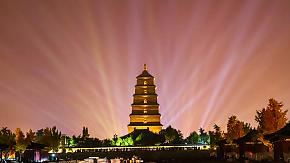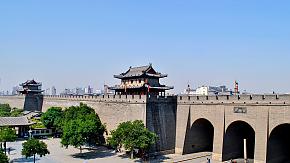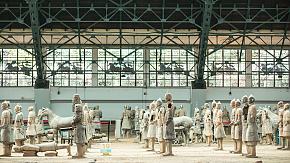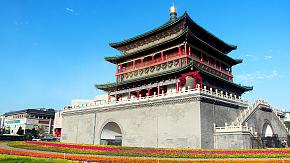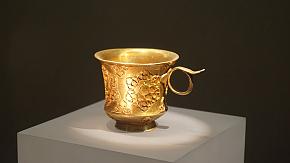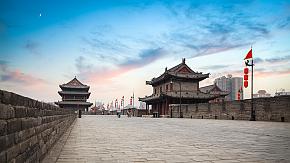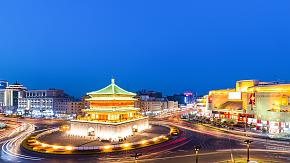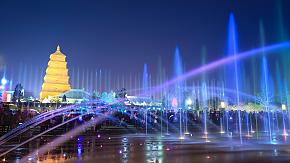Top 10 Facts of Terracotta Warriors You May Not Know
The Terracotta Warriors is one of Xi'an's most famous and must-visit attractions. For many, the Terracotta Warriors hold a sense of mystery - they are vast in number yet remained hidden underground for over 2,000 years. During that time, they silently guarded the emperor's mausoleum, resting alongside Emperor Qin Shi Huang.
Before embarking on your trip, it's helpful to learn about the Terracotta Warriors to gain a deeper understanding of their cultural and historical significance.
- 1. There are more than 8000 Terrecotta Warriors founded in China
- 2. The ticket actually covers two historical sites
- 3. It was accidentally found by folks 50 years ago
- 4. The archaeological work of Terracotta warriors is still ongoing
- 5. The Terracotta Warriors used to be colorful
- 6. All the warriors are different from each other
- 7. Not just warriors - Bronze chariot, horses & weapons
- 8. It took about 40 years to build the army
- 9. Why did Qin Shi Huang ask for so many Terracotta Warriors?
- 10. A guided Terracotta Warriors tour will help you understand better
1. There are more than 8000 Terrecotta Warriors founded in China
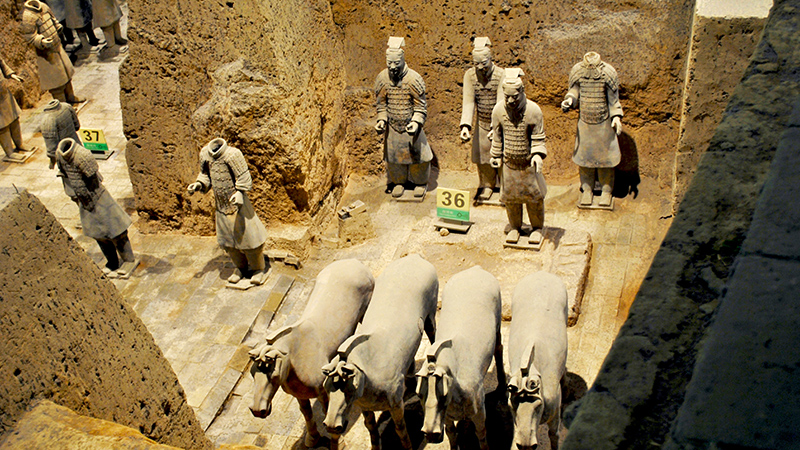 Terracotta Warriors in Xi'an
Terracotta Warriors in Xi'an
The Terracotta Army served as burial objects for Emperor Qin Shi Huang, placed in burial pits located approximately 1.5 kilometers east of his mausoleum. Currently, three Terracotta Army pits have been discovered, numbered as Pit 1, Pit 2, and Pit 3. Nearly 8,000 life-sized terracotta warriors and horses have been unearthed from these pits.
Among them, Pit 1 is the largest, covering an area of about 14,260 square meters and containing approximately 6,000 figures. Pit 2 spans around 6,000 square meters and houses about 1,300 terracotta figures. Pit 3 is the smallest, with an area of around 520 square meters and holding about 70 figures.
2. The ticket actually covers two historical sites
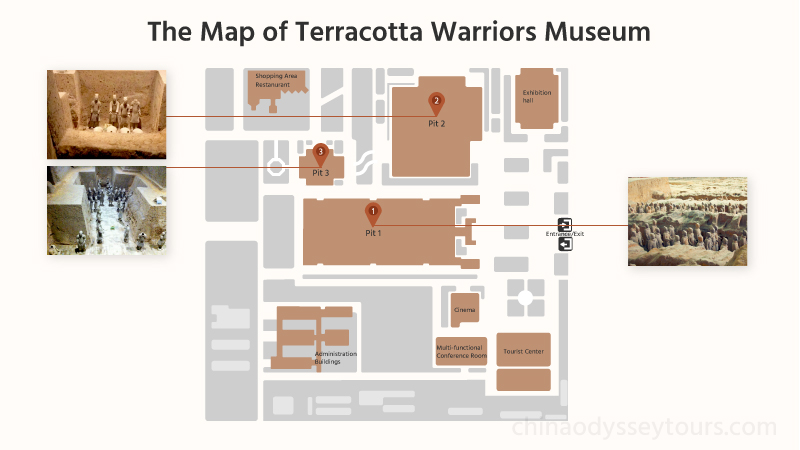 Map of the Terracotta Army
Map of the Terracotta Army
- Ticket Price: 120 RMB (about 17.14 USD)
- Opening Hours: 8:30 AM to 5 PM
If you plan to visit the Terracotta Army, the ticket you purchase actually includes access to two sites: the Terracotta Warriors Museum (Qin Shi Huang's Terracotta Warriors and Horses Museum), and the Bronze Chariot Museum (Qin Shi Huang's Mausoleum Archaeological Site Park). It takes at least half a day to visit both of these two sites about Terracotta Warriors.
We recommend you to start from the Bronze Chariot Museum at Mausoleum Archaeological Site Park, which covers a vast area and is less crowded. For a leisure experience, you can take a paid electric shuttle from the entrance. The shuttle stops at each attraction within the park, allowing you to explore. After your tour, you can have a rest and take a free shuttle near the main gate to Terracotta Warriors museum.
The Terracotta Warriors Museum is where the Terracotta Army are located. The recommended tour sequence is Pit 1, followed by Pit 3, then Pit 2, and finally the exhibition hall, which can be found in the map above. Then, your Terracotta Warriors tour comes to an end. Though July and August are the busiest season, our guide can adjust the visiting order to help you avoid the crowds.
After leaving the site, you can visit a pottery studio on the nearby commercial street to create your own Terracotta Warrior as a souvenir. This is quite popular among kids. If you travel with your kids, we can assist with booking your session to create unforgettable moments. And if there's a language barrier, our English-speaking guides can help you communicate the details of your design.
3. It was accidentally found by folks 50 years ago
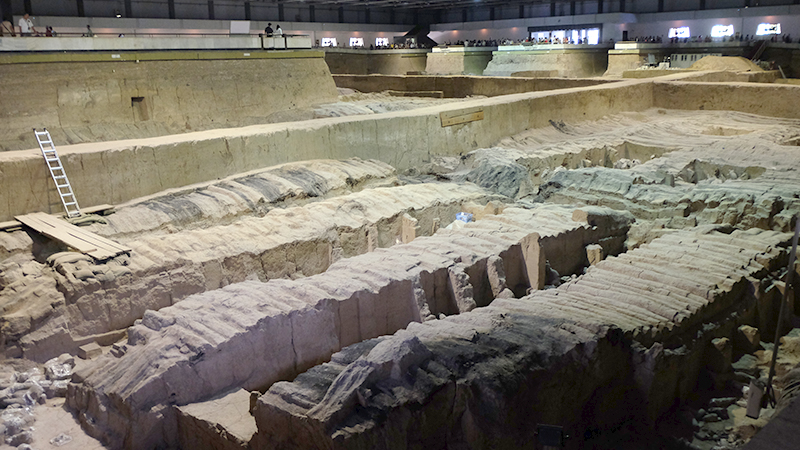 The overview of the Terracotta Army museum
The overview of the Terracotta Army museum
Historical records related to Emperor Qin Shi Huang's mausoleum do not actually mention the Terracotta Army. Nobody knew the existence of the Terracotta warriors at all. Consequently, in 1961, China designated the mausoleum as a key cultural heritage site. There are terracotta figures like musicians and animals found in the pits at Emperor Qin Shi Huang's mausoleum.
It was not until 1974 that fragments of terracotta figures and bronze weapons were accidentally discovered by a farmer, Yang Zhifa, and other villagers while digging a well in a village near the mausoleum. The State Administration of Cultural Heritage dispatched archaeologists and cultural relic experts to investigate the site immediately. Following their assessment, an excavation team was organized, ultimately unveiling the full grandeur of the Terracotta Warriors.
4. The archaeological work of Terracotta warriors is still ongoing
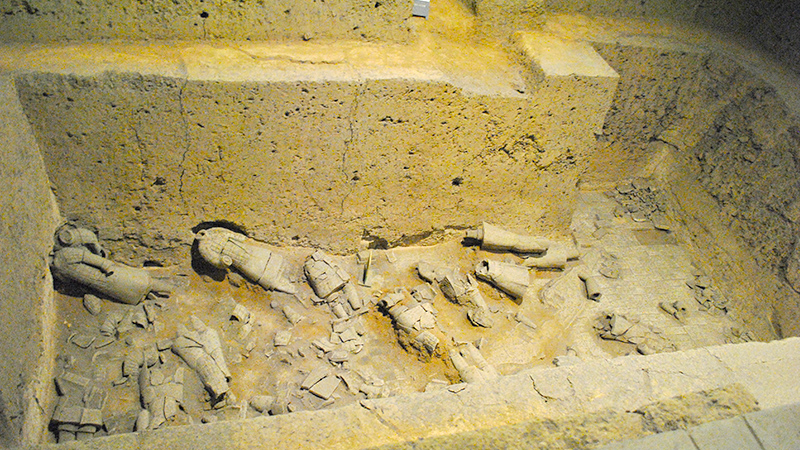 Pieces of the warriors were unearthed
Pieces of the warriors were unearthed
The Terracotta Warriors pits are part of the most famous burial pits accompanying the tomb of Emperor Qin Shi Huang. The excavation and restoration of the Terracotta Warriors remain ongoing, with archaeologists still working on restoring and preserving the three excavated pits since 1961.
Not only has the excavation of the Terracotta Warriors pits not been completed, but the tomb of Emperor Qin Shi Huang itself remains largely unexplored. So far, only the surrounding burial pits have been explored. Out of reverence for the long-slumbering emperor, concerns about unknown safety issues within the tomb, and the limitations of current excavation technology, archaeologists have decided not to conduct further archaeological work on the main tomb for the time being.
5. The Terracotta Warriors used to be colorful
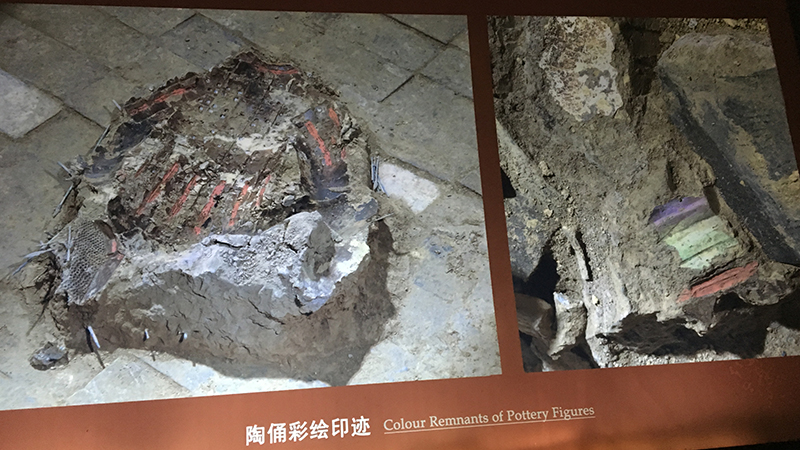 Color remnants of Terracotta Warriors
Color remnants of Terracotta Warriors
Perhaps you've seen photos of the Terracotta Warriors online, where they appear entirely gray, resembling the color of clay. However, archaeological research has revealed that the Terracotta Warriors were originally painted colorful. Most of the pigments used were mineral-based, such as Han purple, azurite, and iron oxide red. Craftsmen ground these minerals into powder, mixed them into egg-based tempera paint, and applied them to the warriors.
The Terracotta Warriors were buried underground for over 2,000 years. When they were exposed to air when unearthed, causing the lacquer layer on their surface to dry and flake off rapidly.
With advancements in technology, archaeologists are now exploring new methods to preserve these vibrant colors.
6. All the warriors are different from each other
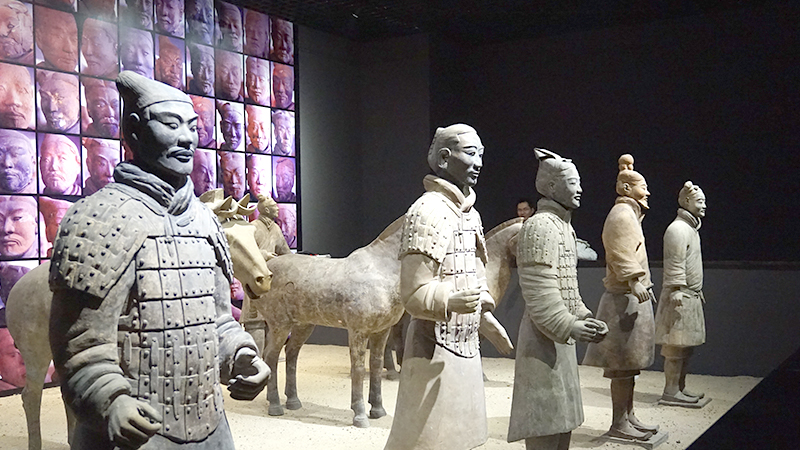 The warriors have different facial features
The warriors have different facial features
Just like real people, the Terracotta Warriors are all different from each other, no matter from the perspective of gestures, clothes, or facial appearances.
Generally speaking, these warriors are about 180 cm tall, with different gestures. Warriors with different gestures take responses to different duties. For instance, terracotta kneeling archers are important members of the army. They bend a bow to start an attack. There are also warriors with better clothes, implying the higher ranking of them, like civil officials.
Archaeologists have come to the conclusion that there are generally eight shapes of faces, which reflect the common facial features of Chinese people at that time, such as square faces, round faces, diamond faces, etc. Some of these facial shapes are still relatively common in modern China. These diverse designs and unique faces resulted in thousands of Terracotta Warriors with distinct appearances, showcasing the exceptional sculpting skills of ancient artisans.
7. Not just warriors - Bronze chariot, horses & weapons
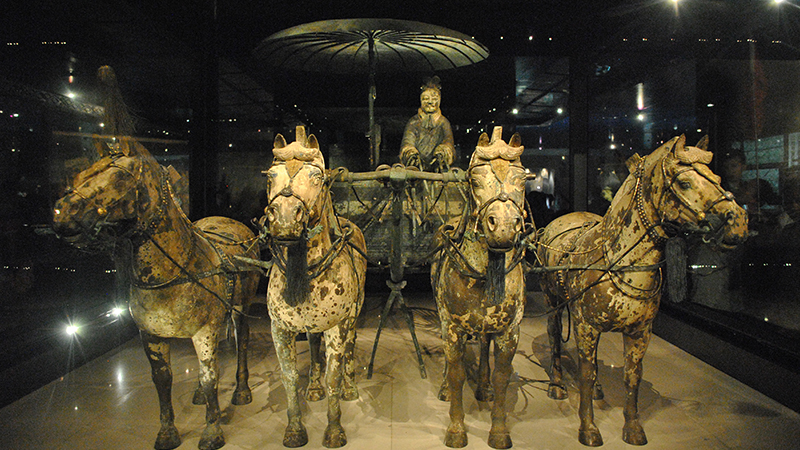 Bronze chariot and horses
Bronze chariot and horses
In addition to the clay warriors, the site also includes bronze chariots, stone armor, bronze weapons, and more. You can find them in the Bronze Chariot Museum. When visiting the three pits of the Terracotta Warriors, you may notice some figures posed as if holding weapons but with empty hands. This is because most of the weapons have been removed and are now preserved in museums.
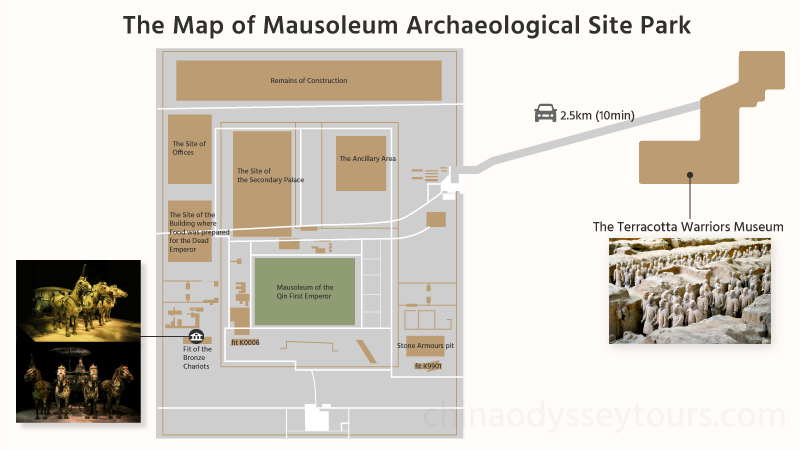 Map of the bronze chariot museum
Map of the bronze chariot museum
The Terracotta Army's weapons are diverse, with the most renowned being the bronze swords and crossbows. The bronze swords, ranging from 80 to 95 centimeters in length, were crafted from a mixture of copper and tin. This design made the swords both hard and resilient. The crossbow, another prominent weapon of the time, resembled a bow and arrow but boasted greater destructive power and higher accuracy.
8. It took about 40 years to build the army
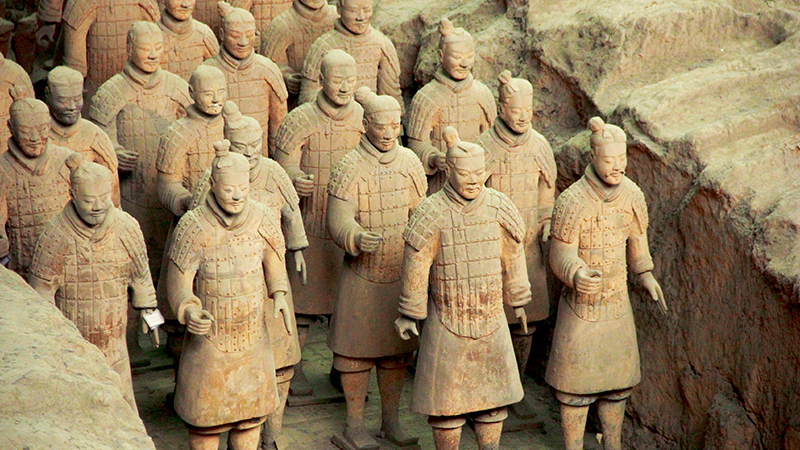 Terracotta Warriors in the pit
Terracotta Warriors in the pit
According to historical records, it might have taken around 40 years to build the Terracotta Army. Although there are no direct historical records of the Terracotta Warriors' existence, Emperor Qin Shi Huang began preparing for the construction of his mausoleum from the time he ascended the throne at the age of 13. By the time he died during an inspection tour at the age of 49, 36 years had passed.
The massive undertaking involved over 700,000 laborers, including craftsmen, artists, and soldiers. The project was part of the emperor's grand mausoleum complex, designed to ensure his authority and protection in the afterlife.
9. Why did Qin Shi Huang ask for so many Terracotta Warriors?
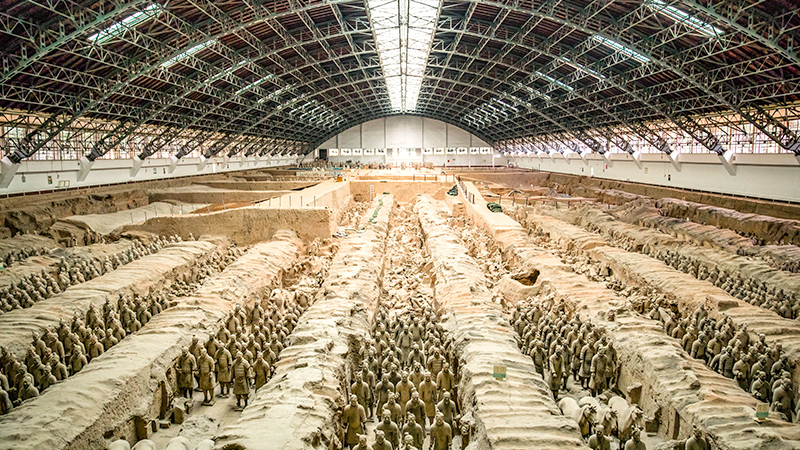 Spectacular view of the Terracotta Warriors
Spectacular view of the Terracotta Warriors
Archaeologists and historians speculate that there are two main reasons why Emperor Qin Shi Huang created the Terracotta Army:
- 1. Following the practice of burial figurines. In earlier periods of Chinese history, it was common to bury living people as sacrificial offerings. However, as society progressed and out of humanitarian concerns, the practice gradually shifted to using pottery or wooden figurines as substitutes for live sacrifices.
- 2. Aspiring to be an emperor in the afterlife. Qin Shi Huang, the first emperor to unify China, spent his life seeking to consolidate his authority and achieve eternal power. As a result, he began planning his mausoleum and creating the Terracotta Army at a young age to ensure that he would have a massive military force to rule the world in the afterlife.
10. A guided Terracotta Warriors tour will help you understand better
Since it's a cultural and historical tour, it's wise to join a guided tour for Terracotta Warriors. Our guides will provide in-depth explanations of the history and significance of the warriors, Emperor Qin Shi Huang, and other archaeological discoveries, offering context you might miss on your own.
Apart from that, the site is extensive, with multiple pits and exhibition halls. A guide ensures you don't miss key highlights and helps manage your time effectively. Our travel consultants can tailor-made your itinerary to avoid crowds as much as possible because the Terracotta Warriors is always a popular attraction in Xi'an, China.
Feel free to contact us or write to trip@odynovotours.com for detailed information about a guided tour for Terracotta Warriors. Our travel consultants will respond within 24 hours.
Related Posts You May Like
What Our Clients Say
"Great Customized Service", "Trip of A Lifetime", "Exceed All Expectations"

